curator's noteThis week our writers delve deep into the brutal fight for survival in their exploration of Kinji Fukasaka's Japanese teen-horror BATTLE ROYALE (2000). THE GAMES WE PLAYEm HoughtonRespect for one’s elders is an important cultural attitude in Japan and, as the opening scenes of BATTLE ROYALE (Kinji Fukasaku 2000) tell us, delinquent school children have become a serious issue in this dystopian world. This exasperating refusal to follow the rules set out by the older generation results in the BR Act being passed, whereby students are forced to battle to the death until only one remains. By doing so, the film acts as a metaphor for how many young people living in the world feel; they can all too often feel helpless in a world controlled by adults. Graphic violence between children always makes for shocking viewing in both cinema and literature. Examples include the death and subsequent cannibalistic consumption of Piggy in THE LORD OF THE FLIES (Harry Hook 1990) as well as the more contemporary issues presented in THE HUNGER GAMES series (Gary Ross and Francis Lawrence, 2012-). BATTLE ROYALE’s violence is considered more extreme than many other examples, with intensely graphic death scenes as classmates settle old school-born scores. The violence in BATTLE ROYALE questions ethics and morality of adolescents as some children fully participate in The Games and aim to kill as many others as possible, while others refuse to partake and resort to suicide. The film creates a powerful dichotomy of peace and chaos; amongst the harrowing violence, death and destruction the children form friendships and even romances with each other. Child violence is always viewed as shocking when displayed on screen as it challenges normal societal expectations for how children should act. It is even more so, when the children are becoming violent as an act of rebellion against the adults holding them to these expectations. Every day this week a different writer will provide their perspective on our MUBIVIEWS film and each post will be open to comments from our readers. Watch BATTLE ROYALE on mubi.com until 30 May 2017 and join the discussion!
0 Comments
curator's noteThis week our writers delve deep into the brutal fight for survival in their exploration of Kinji Fukasaka's Japanese teen-horror BATTLE ROYALE (2000). TEEN QUEENS AND WANNABESSummer ManningWhile "Teen Queens and Wannabes" may not be expected when reading an article about the Japanese dystopian horror BATTLE ROYALE (Kinji Fukasaku 2000), the name of Rosalind Wiseman’s 2002 self-help book, which was adapted by Tina Fey to create the satirical teen comedy MEAN GIRLS (Mark Waters 2004), serves as an apt comparison. Both films comment on the hierarchical social structure of high school. While MEAN GIRLS illustrates the social order with Cady Heron (Lindsay Lohan) imagining the girls who emotionally manipulate each other as wild animals in the African plains, BATTLE ROYALE demonstrates it with a literal fight to the death. One clear parallel that can be drawn is in the BATTLE ROYALE character Mitsuko (Kou Shibasaki) and MEAN GIRLS antagonist Regina (Rachel McAdams). Cold, manipulative and dangerous, both girls lack true friends and distance themselves as a means of self-preservation. While Regina has untreated anger management issues and has trouble coping with her parents fighting, Mitsuko killed a man who paid to have sex with her at a young age and has had to live with the trauma from this experience. Both characters exercise their power over other students as a coping mechanism, so that they can have control over something in their lives. Noriko Nakagawa (Aki Maeda) is bullied by a group of girls in her school, who lock her in a bathroom stall that has defamatory graffiti written about her on the wall. She is devastated when her friend Megumi (Sayaka Ikeda) is murdered by Mitsuko, leaving her without a female friendship, a bond that is crucial to growing young women. This is the opposite to Cady’s journey in MEAN GIRLS, where she becomes one of the bullies and uses her popularity to overthrow Regina. When the North Shore High School students discover that she was involved in writing hate messages in a Burn Book and stage a revolt, she is ostracised and hides from everybody in a bathroom cubicle to eat her lunch. Both films highlight the need for young people to develop healthy social relationships with their peers, as well as the psychologically damaging consequences of bullying and isolation, and they act as cautionary tales against fighting with classmates. Adolescence is difficult enough without starting wars, whether literal or figurative. Every day this week a different writer will provide their perspective on our MUBIVIEWS film and each post will be open to comments from our readers. Watch BATTLE ROYALE on mubi.com until 30 May 2017 and join the discussion!
curator's noteThis week our writers delve deep into the brutal fight for survival in their exploration of Kinji Fukasaka's Japanese teen-horror BATTLE ROYALE (2000). SOCIETY'S BATTLEMATTHEW WEARSReleased at the start of the millennium, BATTLE ROYALE (Kinji Fukasaka 2000) explores multiple issues that were at the forefront of concern for Japanese society. Even today the film holds just as potent a message about youth and a society addicted to violence. The film's premise - school children fighting to their death - can at first appear to be totally absurd. But as with other socio-political horrors, such as DAWN OF THE DEAD (George A. Romero 1978) and THE HOST (Bong Joon-Ho 2006), this initially unrealistic concept works in its favour. The film presents a world filled with insanity and, most disturbing of all, a world that is not too far away from our own. Commenting on western society's relationship with violence, the film uses excessive bloodshed, overly-malicious characters and inventive weapons such as tasers and crossbows to create a world in which humans must commit the worst atrocities in order to survive. The most disheartening aspect is just how fast a person's character and morals can change when their own interests are at stake, displayed at its most extreme when Kazushi Nîda (Hirotito Honda) viciously shoots Yoshio Akamatsu (Shin Kusaka) with a crossbow in the first few minutes of the battle. BATTLE ROYALE is a film that asks the audience to consider how far they would go to survive in the same situation but also how far society would go when faced with equally difficult problems. The film highlights the inexcusable lack of humanity that already exists within our everyday culture and acts as a forewarning for what is seemingly imminent. The film is a harrowing depiction of a bleak future, a future where all our current failures are maximised to their fullest. Most harrowing of all is the lack of alternative choices that the film gives us. Every day this week a different writer will provide their perspective on our MUBIVIEWS film and each post will be open to comments from our readers. Watch BATTLE ROYALE on mubi.com until 30 May 2017 and join the discussion!
curator's noteThis week our writers delve deep into the brutal fight for survival in their exploration of Kinji Fuasaka's Japanese teen-horror BATTLE ROYALE (2000). AN AGE-OLD BATTLESTEVEN FEGANThe young-adult dystopian movie boom of the past ten years in mainstream cinema has often followed similar tropes that have proven successful, both financially and through audience reception. Films such as THE HUNGER GAMES (Gary Ross 2012) and THE MAZE RUNNER (Wes Ball 2014) have depicted dystopian worlds where the teen heroes are the puppets and the adults are their puppet masters. BATTLE ROYALE (Kinji Fukasaku 2000) uses a similar approach and was one of the first to do so. Following the release of THE HUNGER GAMES, the Japanese film ushered in an age of young versus old and has seen a resurgence in popularity; it was the exceedingly violent film that mainstream audiences had hoped THE HUNGER GAMES would be. BATTLE ROYALE includes metaphorical undertones of young people navigating an adult-controlled world to create a relatable, albeit excessive, version of contemporary society. Here, decisions about the future lie in the hands of adults. The young have little choice but to follow. Part of the enduring appeal of films such as BATTLE ROYALE stems from placing young adults as the protagonists, guaranteeing a large demographic. It also represents their insecurities as children in an adult-controlled world that is presented in a highly stylised, dystopian environment created by adults. This is not too dissimilar to modern society where decisions are made by an older generation yet it is the youth who will ultimately navigate the world that has been created for them. With rumours of censorship in various countries including the US and Canada, BATTLE ROYALE remains a relevant film from a societal perspective since its mainstream resurgence. Banned to anyone under the age of 15 after its release in Japan, the film's controversial themes and its difficulty in reaching a mainstream audience only solidify its cultural significance. Such censorship is controlled by adults; the primary demographic - young adults - suffer the consequences as a result. Every day this week a different writer will provide their perspective on our MUBIVIEWS film and each post will be open to comments from our readers. Watch BATTLE ROYALE on mubi.com until 30 May 2017 and join the discussion!
curator's noteThis week our writers delve deep into the brutal fight for survival in their exploration of Kinji Fukasaka's Japanese teen-horror BATTLE ROYALE (2000). TAKING A STAND BEFORE THE FALLGEORGE LEEThe premise of BATTLE ROYALE (Kinji Fukasaku 2000) is simplistically horrific. A class of students must murder each other until one survives. While this idea is straightforward, the ensuing decision each student makes is anything but. We are often faced with ethical dilemmas in our day to day life but never anything quite as daunting as to whether we should murder our classmates. The film unfurls with students taking up various ethical stand points. The most common viewpoint seems to be of reflective morality. This means that what is ethically correct is not set in stone but depends on the situation. Most students take this approach when they decide whether to kill or not. They are aware that their actions are wrong but are acting in self defence, which seemingly justifies their actions. Perhaps the most interesting of the viewpoints is that of Ogawa (Tomomi Shimaki) and Yamamoto (Yasuomi Sano) who refuse to kill regardless of circumstance. Due to this ideology, they try and escape rather than fight, which ultimately leads to their death when the pair jump off of a cliff to avoid killing their classmates. This is a form of deontological ethics, a theory that dictates it is the action itself that is the moral component, not the consequence. So in the case of BATTLE ROYALE; the act of killing is an immoral act even if the killer were to be victorious and survive the bloodbath. This is an idealistic viewpoint and one that is the basis of many legal systems. However, BATTLE ROYALE shows the futility of this view. Ogawa and Yamamoto make their stand but to what end? They are simply another two victims in the ensuing onslaught, their deaths just as tragic as that of their classmates. Every day this week a different writer will provide their perspective on our MUBIVIEWS film and each post will be open to comments from our readers. Watch BATTLE ROYALE on mubi.com until 30 May 2017 and join the discussion!
curator's noteThis week our writers peruse the psychedelic and hone in on the hallucinative in their exploration of Michael Glawogger's absurd Austrian stoner comedy CONTACT HIGH (2009). WEED-EN-SCÈNEMatthew Wears"Contact high" is a term used to describe the situation in which a person begins to feel high simply from being around someone who is under the influence of an illegal drug. CONTACT HIGH (2009), directed by the late Michael Glawogger, is a zany and outlandish drug-fuelled adventure that, as the names implies, aims to make the audience feel just as intoxicated as the two main characters, Max (Michael Ostrowski) and Johann (Raimund Wallisch). Throughout this episodic story, the mise-en-scène is used creatively to invite us into a world of trippy visuals, bizarre characters and outlandishly offbeat events. The film treats space and environment like a blank canvas on which Glawogger inventively designs each visually stimulating trip. Everyday places such as busy nightclubs, classically designed train carriages and decidedly drab apartments become playgrounds for Max and Johann to occupy. The use of such mundane areas only serves to amplify the effects of drugs. Seemingly normal areas are transformed time and time again into colourful and vibrant scenes that often do not make sense in the real world. We are invited to exist within them as well. Yet, with each new scene being more random than the last, we are left confused and unable to make sense of any narrative structure. This is especially the case toward the end of the film where the plot seems to be abandoned altogether for a trip that allows the audience to fully indulge in the grand scale, spectacular animations created with rich, vibrant colours. In a film where the only function appears to be to visualise the effects of drugs, the mise-en-scène is crucial. The heightened and exaggerated visuals are obviously meant to replicate being high, a state in which all the senses are at their most intense. CONTACT HIGH’s mise-en-scène offers a visual display of the effects of drug use that sets out to create the same chaotic, nonsensical and truly confusing feeling for its audience that Max and Johann experience. Every day this week a different writer will provide their perspective on our MUBIVIEWS film and each post will be open to comments from our readers. Watch CONTACT HIGH on mubi.com until 19 May 2017 and join the discussion!
curator's noteThis week our writers peruse the psychedelic and hone in on the hallucinative in their exploration of Michael Glawogger's absurd Austrian stoner comedy CONTACT HIGH (2009). WHAT'S IN THE BAG?GEORGE LEEThe MacGuffin, popularised by Alfred Hitchcock, is a plot device used to drive the narrative forward that usually has no other explanation or meaning. The main point of a drug-fuelled romp such as CONTACT HIGH (Michael Glawogger 2009) is to use the medium of film to demonstrate the effects of psychotics. Therefore, a MacGuffin is a necessity so that characters have something to do other than just get high. In this film, the MacGuffin is a bag. The contents and the purpose of the bag are left a mystery, other than it needs to be returned to a stereotypical gangster type. At one point or another nearly all the character are tasked with retrieving the bag. This means Max (Michael Ostrowski) and Johann (Raimund Wallisch) are involved in all kinds of hijinks, such as mistaken bags and awkward car chases, all because of the mysterious bag. It is easy to imagine that if the bag were removed from the plot entirely there would not even be a movie. This shows what a crucial plot point MacGuffins are. In the final scene of the film, the bag is opened only to keep its true contents hidden. What comes out is a visual display of fairies, mushrooms and butterflies. It might be interpreted that the bag itself contained drugs as Max and Johann were trying to return the bag to a drug dealer. However, it seems more likely that the inside of the bag is a drug trip and represents the film itself; the bag is nothing more than an excuse to show these visual representations of getting high. What is in the bag is actually meaningless in this kind of narrative; the bag is only needed for this kind of meandering story to give it some semblance of story. Every day this week a different writer will provide their perspective on our MUBIVIEWS film and each post will be open to comments from our readers. Watch CONTACT HIGH on mubi.com until 19 May 2017 and join the discussion!
curator's noteThis week our writers peruse the psychedelic and hone in on the hallucinative in their exploration of Michael Glawogger's absurd Austrian stoner comedy CONTACT HIGH (2009). HEAD TRIPEM HOUGHTONShowing how drugs affect their characters is a popular trope in the “stoner” film. The comedy sub-genre has boomed in both mainstream and independent cinema since the 1990s, evident in the popularity of films such as the Jay and Silent Bob “View Askewniverse” films (Kevin Smith 1994 -) and Seth Rogan’s works such as PINEAPPLE EXPRESS (David Gordon Green 2008) and THIS IS THE END (Evan Goldberg and Seth Rogen 2013). CONTACT HIGH (Micheal Glawogger 2009) depicts its characters’ drug-induced hallucinations differently to how other films have done in the past. Instead of using an abundance of CGI to recreate what the characters see, CONTACT HIGH does so in its use of jarring and disjointed editing techniques mixed with more physical manipulations of other people and settings. Rather than editing a multitude of colours dancing across the screen, CONTACT HIGH goes further by actually changing the world around the characters for the audience to see. The film itself represents a “trip”, with everything starting normally but then it all descends into chaos. The mysterious glowing substance, hidden in the bag that Max (Michael Ostrowki) and Johann (Raimund Wallisch) are tasked with finding, has an hallucinatory effect on all who encounter it. And thus begins the spiral into a drug-fuelled whirlwind adventure. During a scene in a nightclub, Max and Johann eat “space cakes” filled with the mysterious ingredient and they begin to see unusual visions of large anthropomorphic dogs in place of the other dancers. By using dog masks instead of perhaps more realistic special effects in scenes such as this, it makes this “trip” feel even stranger. These physical manipulations allow reality to be subverted, merging the expected with the unexpected. Every day this week a different writer will provide their perspective on our MUBIVIEWS film and each post will be open to comments from our readers. Watch CONTACT HIGH on mubi.com until 19 May 2017 and join the discussion!
curator's noteThis week our writers peruse the psychedelic and hone in on the hallucinative in their exploration of Michael Glawogger's absurd Austrian stoner comedy CONTACT HIGH (2009). HIGH ON LIFE ISSUESSTEVEN FEGANOne of the key elements that have attributed to the success of comedies involving drug use is the foregrounding of friendship, or some form of odd pairing, that ensures a comedic back and forth for the audience to enjoy. CONTACT HIGH (Michael Glawogger 2009) utilises this formula, devoting ample time to an array of colourful characters, while also exploring contemporary issues involving drug use, xenophobia and homosexuality, expertly masked in a buddy film. While the central plot involves the retrieval of a bag, it simply acts as a plot device to explore these themes of friendship and unlikely pairings. Contemporary issues are deconstructed in a comedic yet formidable way that does not overshadow the light-hearted nature of the film, but instead complement the overarching, ludicrous nature of how drug use is presented onscreen. By not highlighting the contemporary issues as a main story thread, it allows the unfold as an irreverent comedy. The comedic tone could be interpreted as CONTACT HIGH not wanting to politicise its narrative and implies a reluctance to highlight issues as issues. Instead, the film presents homosexual characters, frequent drug use and the stereotyping of ethnic groups. For example, a character (Imran Mirza) simply called Pakistani is the butt of several jokes relating to suicide bombings, but they remain jokes, highlighting the reluctance of the film to politicise itself. Instead, the film remains comedic, rather than preaching to its audience. CONTACT HIGH does not promote these themes but ultimately intertwines pressing contemporary matters with drug-induced comedy throughout the film. It leaves the audience with a simple story to enjoy but with relevant, hard-hitting undertones to be explored with further viewings. Every day this week a different writer will provide their perspective on our MUBIVIEWS film and each post will be open to comments from our readers. Watch CONTACT HIGH on mubi.com until 19 May 2017 and join the discussion!
curator's noteThis week our writers peruse the psychedelic and hone in on the hallucinative in their exploration of Michael Glawogger's absurd Austrian stoner comedy CONTACT HIGH (2009). "EAT ME", "DRINK ME"SUMMER MANNINGAfter a night of clubbing, under the influence of drugs and alcohol, CONTACT HIGH’s (Michael Glawogger 2009) affable stoner Max (Michael Ostrowski) and sausage connoisseur Johann (Raimund Wallisch) wake up in their hotel room, hallucinating that the furniture is much smaller than its normal size. Max even sees the cars in a television broadcast of renowned sports race Le Mans shrink before him. As they return to their room the previous night, Johann claims they are going “down the rabbit hole”; indeed, the following scene is reminiscent of several sequences in the Disney animated classic ALICE IN WONDERLAND (Clyde Geronomi et al. 1951). In the Disney animation, Alice shrinks and grows several times by consuming different food and drinks. Lewis Carroll’s source novels and the various film adaptations have long been associated with recreational drug use due to their surrealist, psychedelic imagery. Alice eating the cake and drinking from the potion bottle does not actually change her physical size but her perception of reality, much like Max and Johann when they wake up. There are several other allusions to the Carroll story throughout, including an excerpt from the 1974 Captain Beefheart & The Magic Band song “Party of Special Things to Do”, which mentions the Red Queen, and a character named Sissi (Aline Pölzi), a young girl with blonde hair and blue eyes who resembles Disney’s Alice. References to Alice’s warped perceptions suggest that Max and Johann are in a childlike state while they are high; their openness to their own imaginations is something that should also be embraced by the viewer as they watch. Every day this week a different writer will provide their perspective on our MUBIVIEWS film and each post will be open to comments from our readers. Watch CONTACT HIGH on mubi.com until 19 May 2017 and join the discussion!
|
MUBIVIEWSOne MUBI film, five perspectives, endless possibilities. Archives
July 2017
Categories
All
|


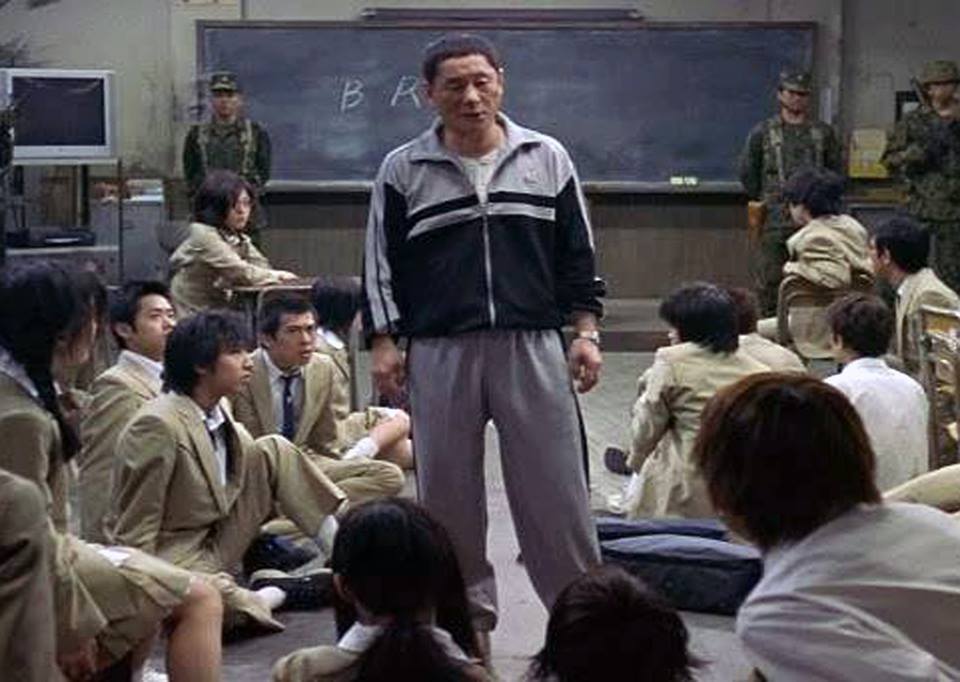
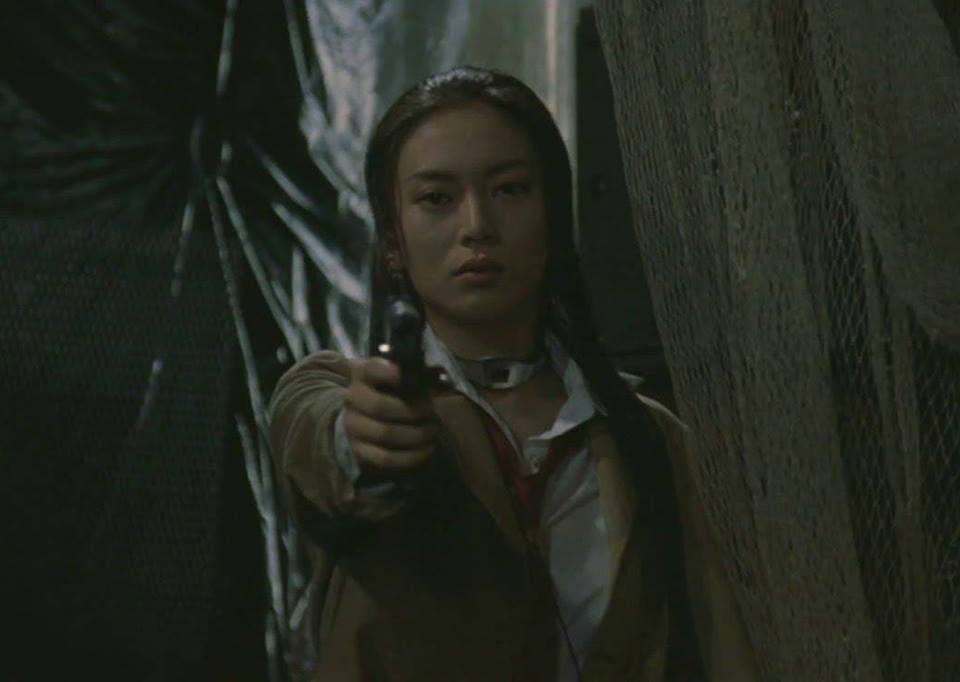
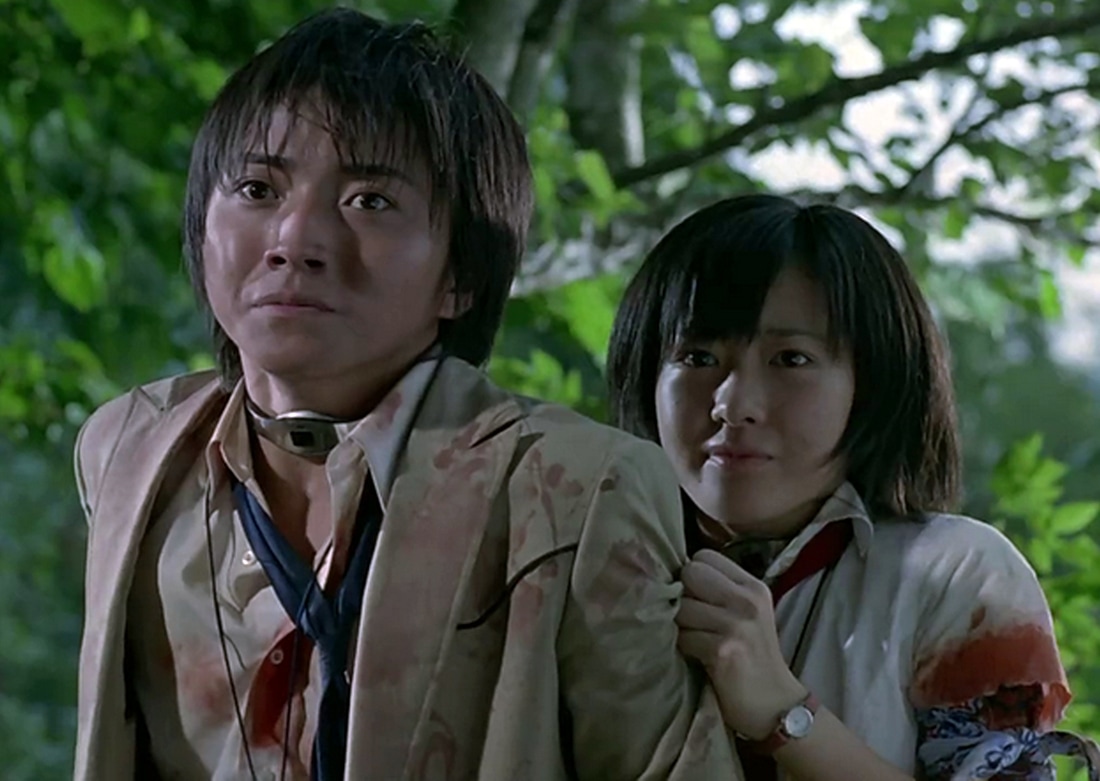
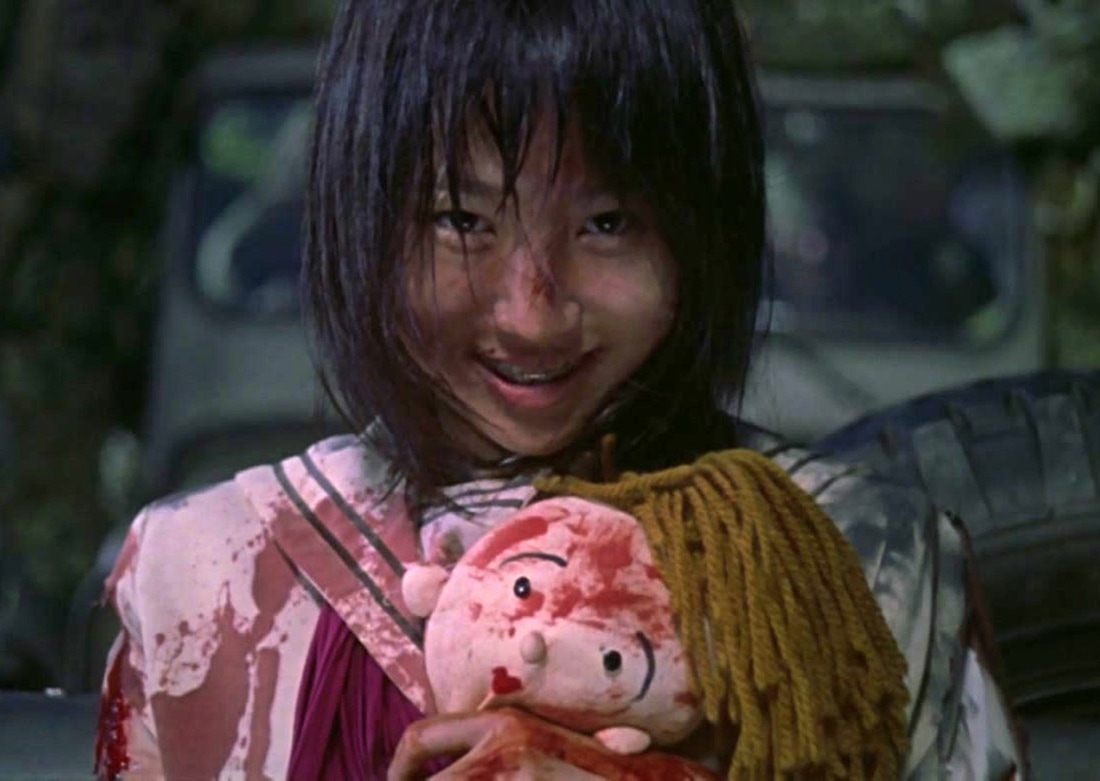
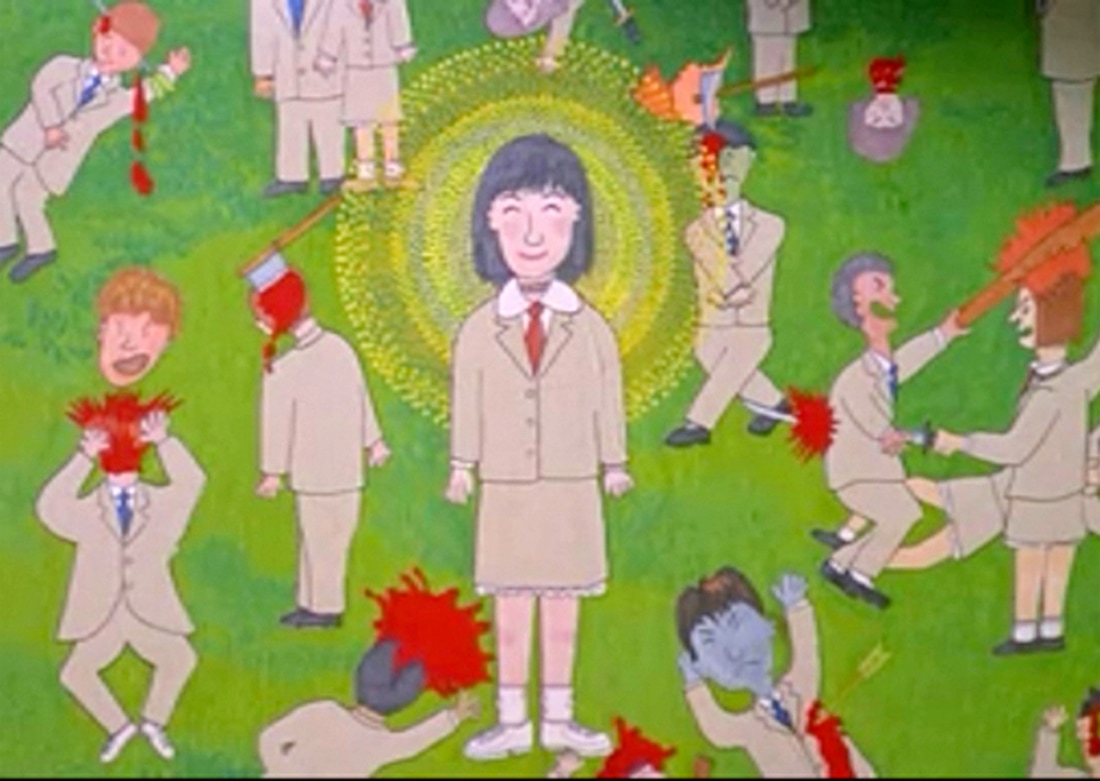
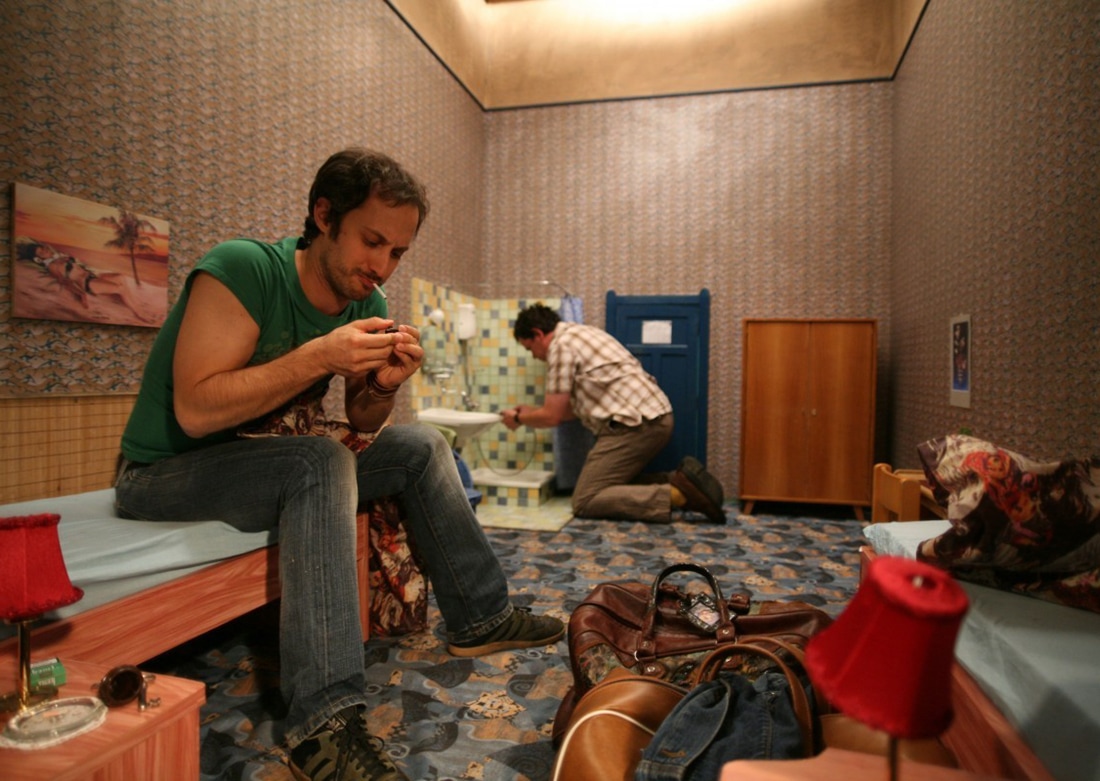
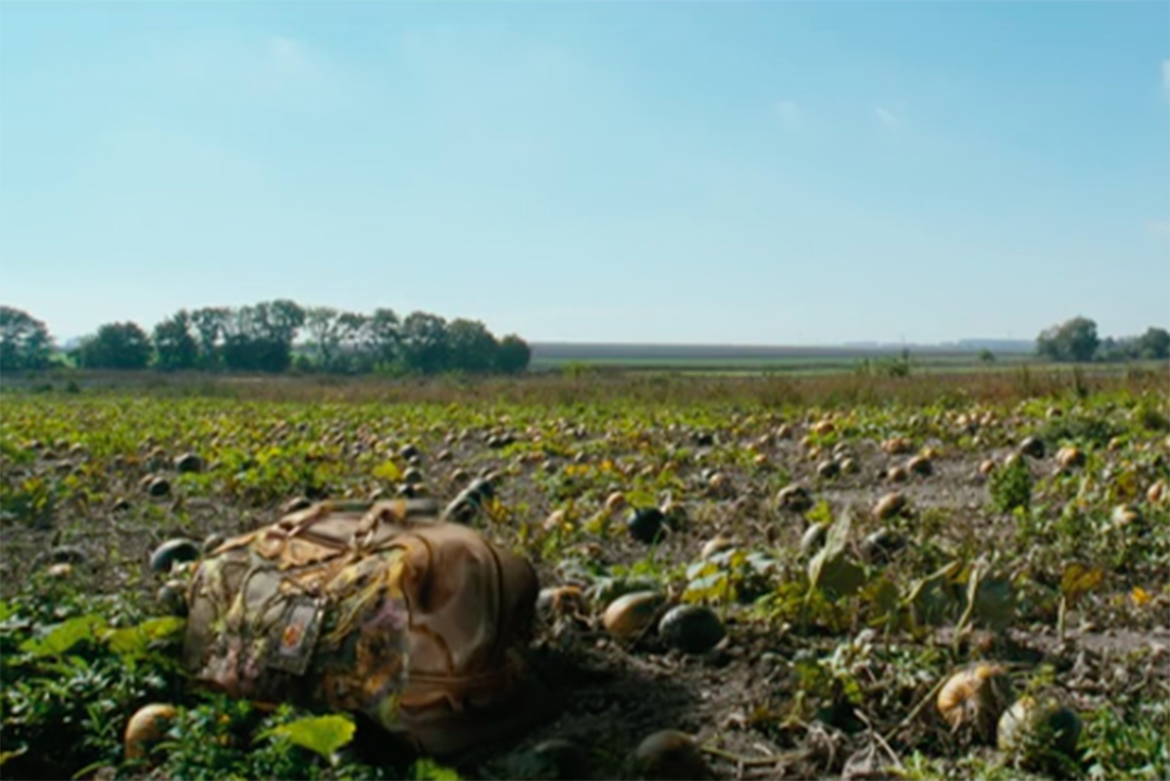
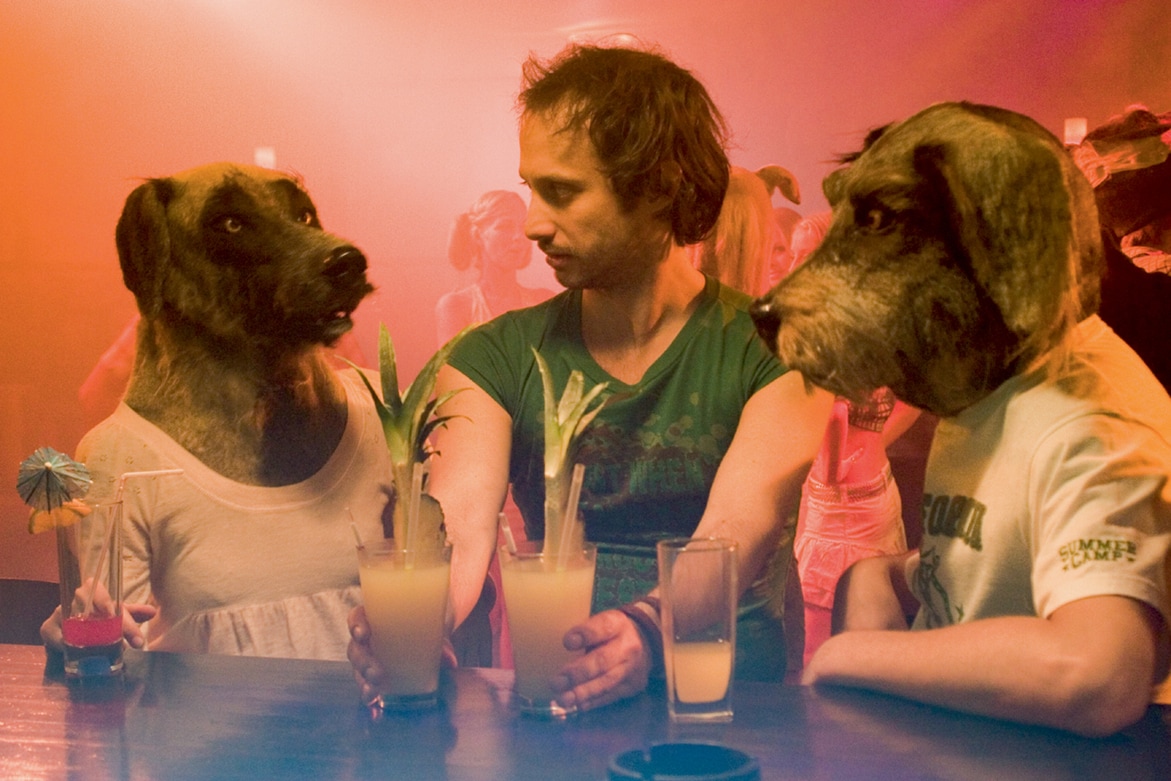
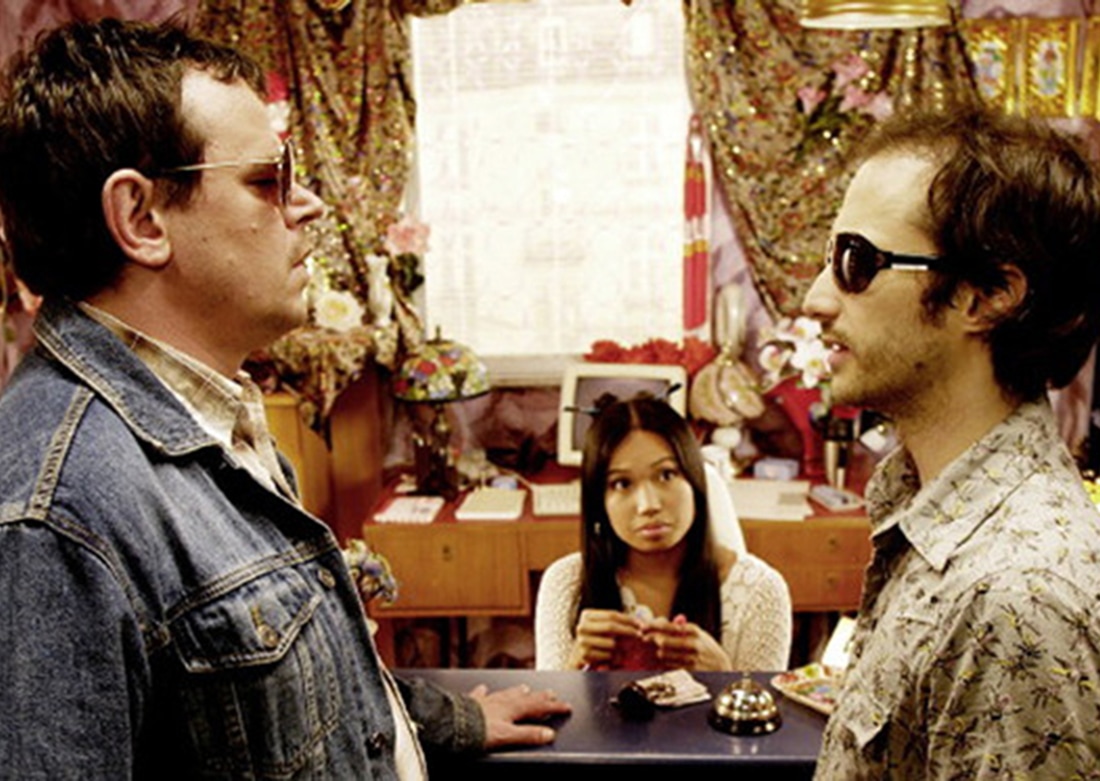
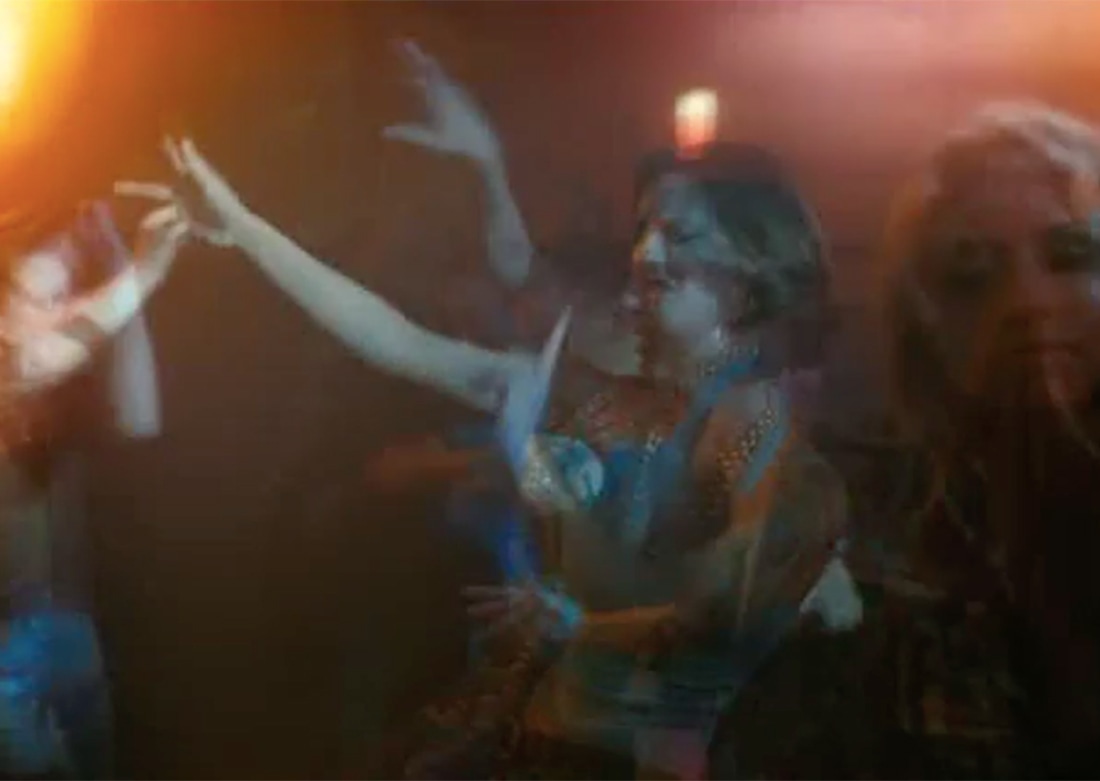
 RSS Feed
RSS Feed
